For our group research project we got inspired by the story titled “The Veldt”. In this story it tells the story of a family who live in a house operated entirely by AI. It even had a virtual room that can simulate any environment to extraordinary precision. While in the room you could even feel elements of the weather and experience heat and cold. It also smelt like the simulated environment. This house was fully interactive with its inhabitants and it was what inspired us to build our made up device. We decided to build a portable device that allows the ability to simulate any desired environment. The goal of this device was to help aid mental struggles by taking you to a place most desired and experiencing a virtual experience.
The technology we used followed very closely to the Virtual reality goggles. This device is a really popular technology and allows you to see, hear and interact with the virtual world. The issue however is that this technology is not very efficient as the interaction is only one sided. Our device will allow for both parties to interact equally. We are adding smell sensors, heat sensors and electrodes to respond to brain activity. Our device reads brain activity and sends it to the headset and goggles to get a reaction. Meaning if you were to pick up something in the virtual world, you would feel it in the gloves as if it were real. the smell would also be released to match the environment. 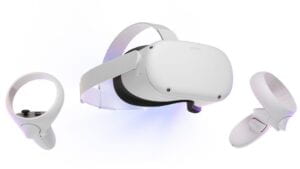
Constructing the device was very fun because we all had many ideas of how we could build. We settled on making the whole of the device out of cardboard. This is because it is easier to build more complex shapes. The device consisted of 3 major parts, the headset/goggles, cables and gloves. I was in charge of drawing the sketches of our prototype. The headset had an adjustable band so that it can fit on any ones head. The cables ran from the headset to the gloves.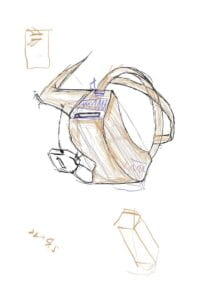
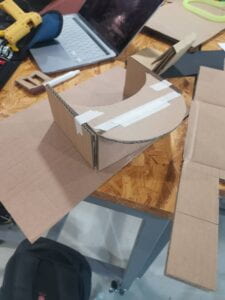
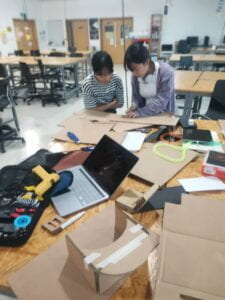
The reason we built this device is to help those with mental issues. Our belief as a group is that mental illnesses and struggles like depression or stress can be cured by experiences of good memory. So our whole play was based around this .We got together and brainstormed ideas. We came up with the scenario of a stressed student at school who is seeking mental help, the doctor prescribes this machine as treatment and the student goes through the process of what he is experiencing. Most of all we wanted to show the element of interaction so we spent time building props that show the interaction that is going on. An example is that we made a painting of a tree and my role was to pretend like I’m climbing the tree and getting a coconut. Everyone played a role in the act.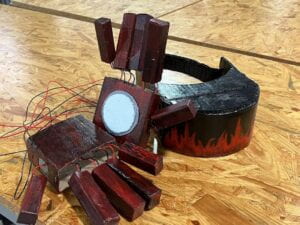
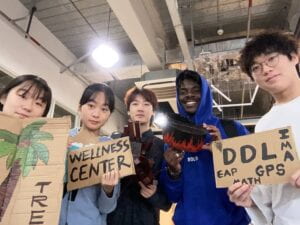
I do not fully remember some of the acts that were done by other groups, but the one that really stood out to me was the last groups. The story of the group was based on a dystopia of people turning to stone from a virus. Their device was a robot that scans how infected they are and after offers assistance to the people. I liked this because when communicating it was mutual between the human and the robot. I like the fact that they covered how the robot would interact/react at all the stages of sickness. My complaint however. Is that building a humanoid robot, you do not really get to see the function of thing like scanning for sickness or assisting. it had to be acted out and assumed how these functions would work. I would also argue that the design is not optimal to its use. For example you would use a dishwashing machine to wash dishes, you would not get a humanoid robot to wash the dishes because it is less effective. Instead to having a robot maybe it could be something like a cart that carries people.
